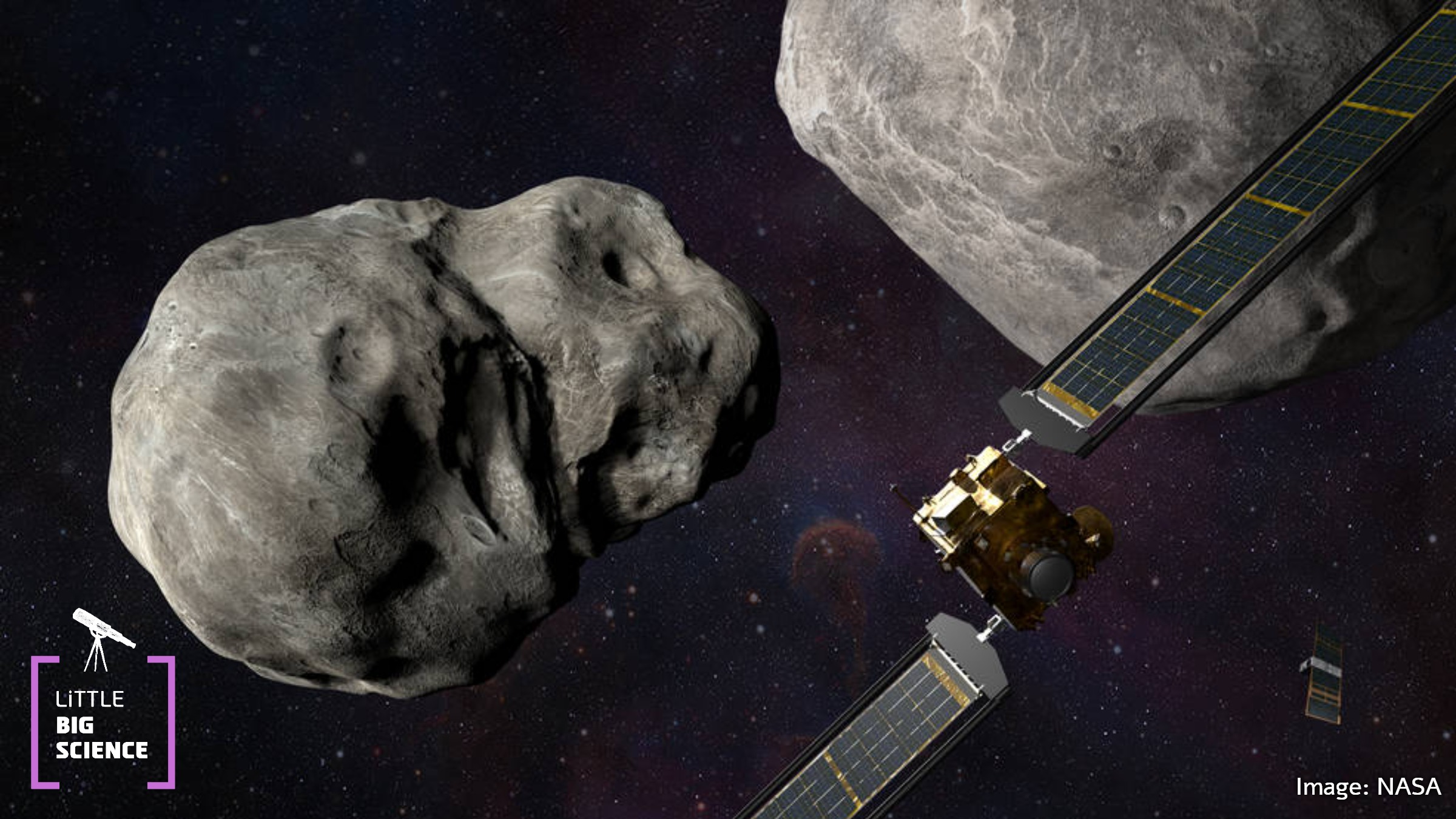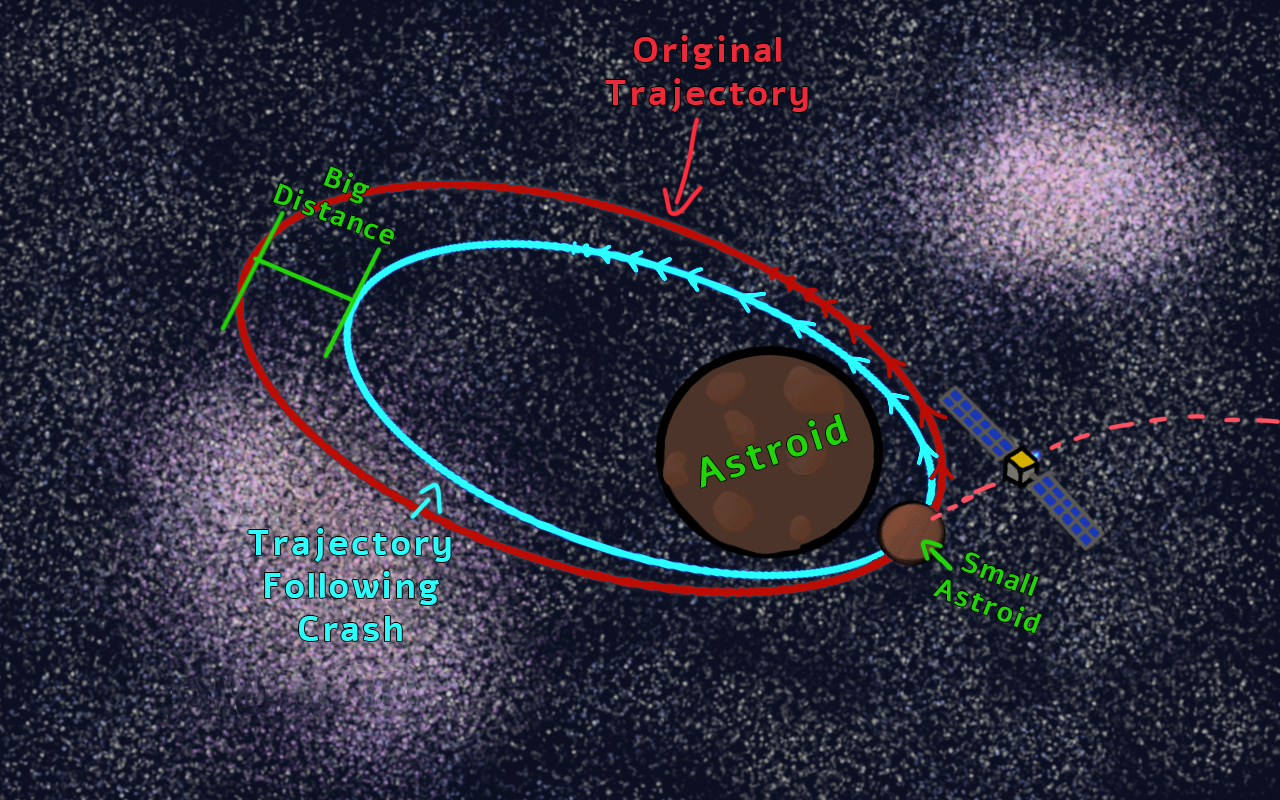
A NASA spacecraft, launched this morning, will crash into an asteroid to alter its trajectory. If the mission succeeds, we could employ a similar approach should we detect a threatening asteroid, to ensure it does not destroy us.
Advertisement
A few months ago, we wrote here about near-Earth asteroids [1]. Although the current probability of a large asteroid actually striking Earth is low, we know that such an event is possible (after all, an asteroid wiped out the dinosaurs). For that reason, space agencies track many asteroids and draw up contingency plans for dealing with a real threat. Some of those plans are described in a post we published earlier [2]. NASA has various plans at different stages of technological maturity, and next year it is set to test a technology that is already available: kinetic impact.
This morning (Wednesday, 24 November 2021) NASA successfully launched a spacecraft that will collide with an asteroid [3]. The spacecraft, named DART (an acronym for Double Asteroid Redirection Test), is designed to slam into an asteroid at high speed and slightly alter its trajectory. A very small change in an asteroid’s course early on (while it is still far from us) will cause its path to diverge and the asteroid to accumulate a large distance from Earth by the time it reaches our neighborhood—a distance large enough to guarantee that it will miss collision with Earth [4] (see illustration):

Illustration: Noga Denenberg
NASA’s current mission will carry out such an impact on a sizable asteroid that is gravitationally bound to an even larger asteroid (the target asteroid is, in fact, its moon). The spacecraft will reach the larger asteroid, autonomously identify the smaller one, and crash into it. It will strike the asteroid moon at very high speed, transferring energy from the spacecraft to the asteroid and thereby inducing a (small) change in the asteroid’s velocity. This slight change in velocity will produce a significant change in the moon’s orbit around the larger asteroid. One of the mission’s goals is to measure the change in the smaller asteroid’s orbital period, thus testing whether the impact achieves the desired velocity shift. If the collision produces the expected change, we will be one step closer to active defense against asteroid impacts, so that one day we can use a similar technology to deflect a comparable asteroid that threatens us.
In addition, the spacecraft will test other new space-propulsion technologies: an advanced electric engine and roll-out solar arrays (stowed during launch). The solar panels that generate electricity for the spacecraft’s systems are large and relatively thin surfaces intended to capture as much sunlight as possible (often they are larger than the spacecraft itself). Therefore, during launch, while the spacecraft is attached to the rocket and in subsequent stages, the panels are folded to save space. One of the critical post-launch steps is releasing the spacecraft and deploying the solar panels. Until now, solar panels on satellites consisted of a series of rigid surfaces folded accordion-style against the satellite and unfolded using a hinge mechanism. Releasing these panels is mechanically violent (the release is powered by a spring or a small explosive device that provides the deployment impulse). In NASA’s current mission, the panels are not rigid but flexible, rolled up beside the spacecraft like a classroom projector screen or a roll of aluminum foil in the kitchen. Therefore, deployment will be a much gentler process, ensuring the integrity of the spacecraft.
Let’s hope the experiment succeeds, and we see a change in the moon’s orbit around the larger asteroid. If that works, then one day when we detect an asteroid heading our way, we won’t have to train Bruce Willis for a last-minute trip to space.
Editor: Yinon Kahtan
English Editor: Gloria Volohonsky
*Thanks to Noga Denenberg for the illustration
References:
- Armageddon? Not Today!
- The Asteroids Are Coming (Hebrew)
- NASA – DART
- Bate, Roger R., Mueller, Donald D. and White, Jerry E. Fundamentals of Astrodynamics. New York: Dover Publications, 1971.







